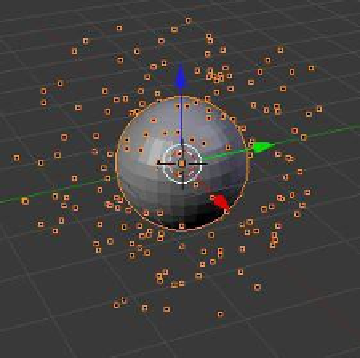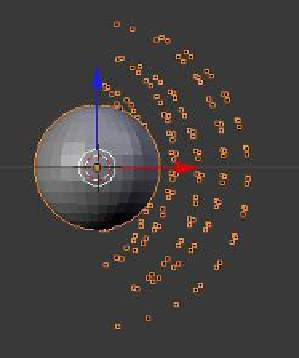Graphics Programs Reference
In-Depth Information
Figure 13.30
Figure 13.31
the timeline shows a 250-frame animation window as seen by “Start: 1” and “End: 250”
(Figure 13.27). With your cursor in the 3D window and with the UV sphere selected,
press Alt + the A key to play the animation of particles being generated. The particles
emit from the surface of the sphere in a random order and fall towards the bottom of the
screen. The animation plays for 250 frames then repeats. Press Esc to cancel.
Click on the green line and drag it over to frame 41 to see the view in Figure 13.28. The
particles behave in this manner since there is a gravitational force being applied. Have
a look at the properties window - “Scene” button and note the tick in the “Gravity” box
(Figure 13.29). Click on the tick to remove it and play the animation again—this time
the particles emit from the sphere and float off into space (Figure 13.30). They still emit
in a random order from the faces of the sphere. Look at the “Emission” tab and note the
values inserted (Figure 13.31). These values tell us that 1000 particles will be generated in
the animation starting at frame 1 and ending at frame 200 during the
animation and that the animation is 250 frames in length. There is also
a “Lifetime” value that tells
us that when a particle is
generated, it remains vis-
ible for 50 frames. There-
fore, a particle generated at
frame 200 will remain vis-
ible until frame 250.
Note the tick in the box
labeled “Random” in the
“Particles” button - “Emis-
sion” tab. This is providing
the random order of gener-
ation of the particles. Click
on the tick to remove it.
Figure 13.32
Front view
Top view








